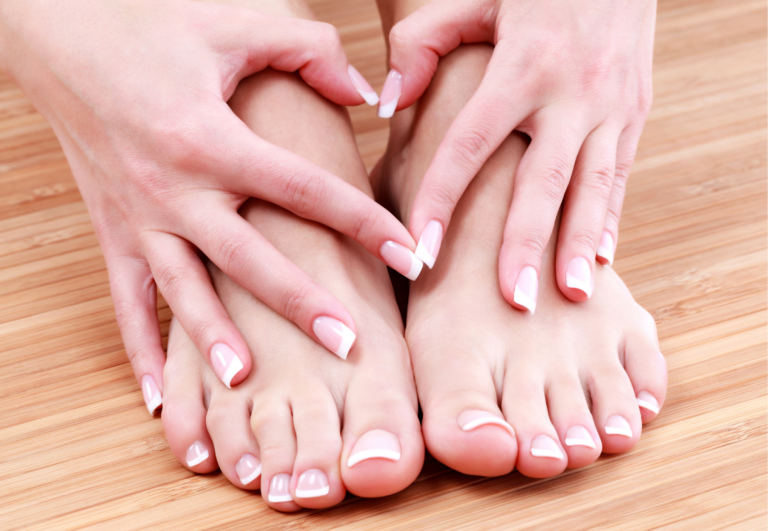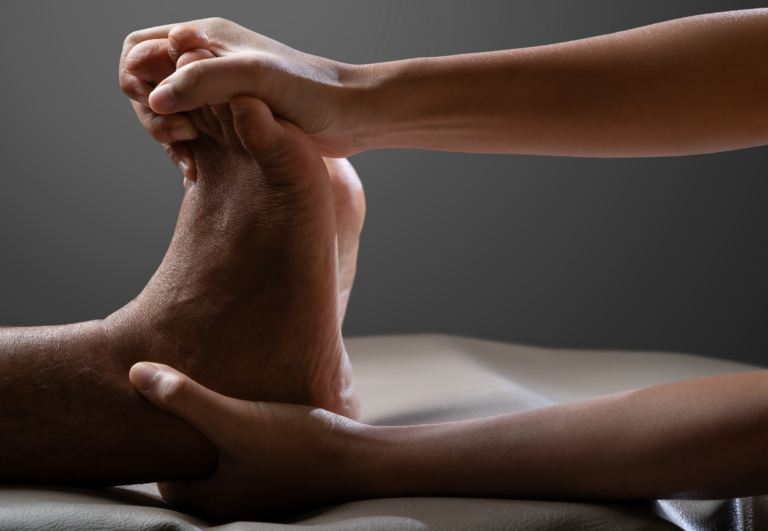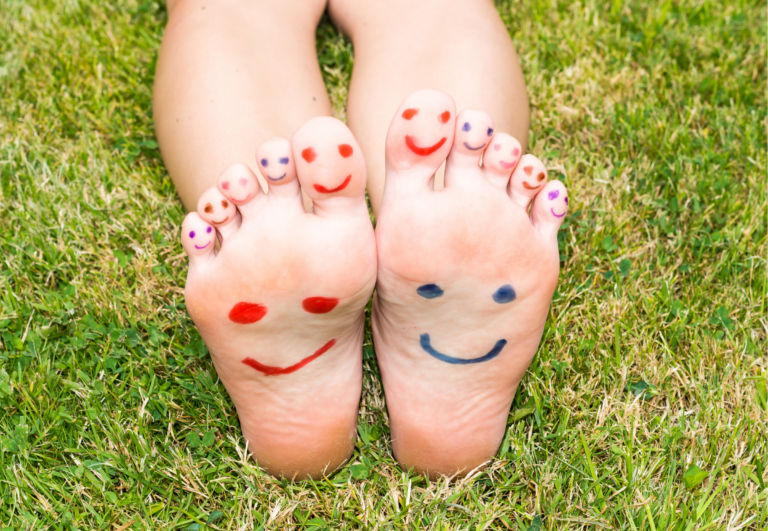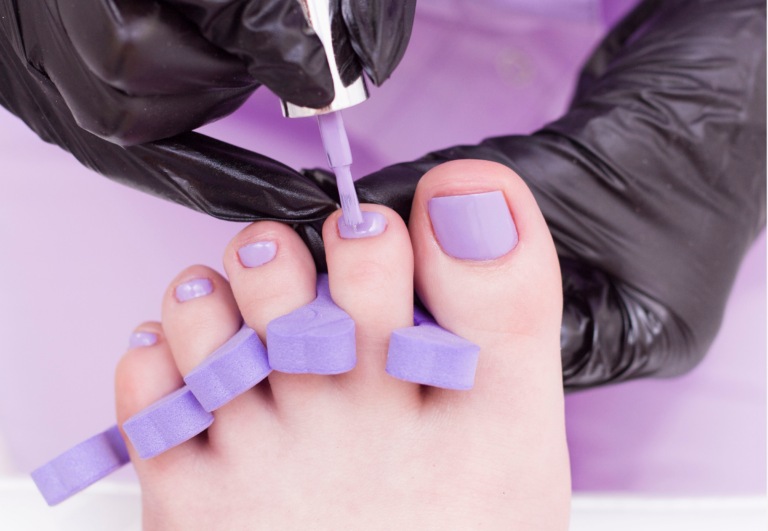Toe Spacers for Children: Safe Usage Guidelines and Tips
Toe spacers for children are gaining attention as a practical tool for foot health. In my experience, they serve to maintain proper toe alignment which can be crucial as a child’s feet develop. Ensuring that toes have adequate space can prevent issues such as overlapping toes and may even contribute to better balance and posture.
Safety is a top priority when it comes to anything we use for our children, and toe spacers are no exception. It’s important that these spacers are used correctly to reap the benefits. They should not cause any discomfort and should be made of child-friendly, non-toxic materials. It’s also essential to choose the right size and consult with a pediatric podiatrist if there are any concerns about a child’s foot health or the use of toe spacers.
Benefits of Using Toe Spacers for Children
Toe spacers offer several advantages for children’s feet, particularly in maintaining proper toe alignment and supporting long-term foot health.
Here are some benefits to consider:
- Promotes Natural Toe Alignment: Toe spacers can encourage proper toe alignment in children, which is important as their bones and joints are still forming. Proper alignment can help prevent future foot problems.
- Improves Balance and Stability: Well-aligned toes can enhance a child’s balance and stability, which can be beneficial for walking, running, and other activities.
- Prevents Toe Crowding: Children who wear tight or ill-fitting shoes may develop crowded toes. Toe spacers can help prevent this by maintaining space between the toes.
- Aids in Correcting Common Foot Issues: Issues like overlapping toes, bunions, or mild toe deformities can be addressed early with toe spacers, potentially reducing the need for corrective procedures later in life.
- Enhances Foot Strength and Flexibility: Using toe spacers can strengthen the muscles of the foot and increase toe flexibility, which can contribute to overall foot health.
- Supports Recovery from Foot Injuries: If a child has a foot injury, toe spacers might aid in the recovery process by keeping the toes properly aligned and reducing stress on the affected area.
- May Improve Gait: Proper toe alignment can lead to a more natural and efficient walking pattern, or gait, which can improve overall posture and biomechanics.
- Increases Comfort: For children with foot discomfort due to tight shoes or mild deformities, toe spacers can increase comfort by relieving pressure on the toes.
Before using toe spacers for children, it’s important to consult with a pediatric podiatrist or a foot health specialist. They can provide guidance on the appropriate use of toe spacers and help determine if they’re suitable for your child’s specific needs.
Additionally, monitoring the child’s use of toe spacers is crucial to ensure they are comfortable and beneficial.
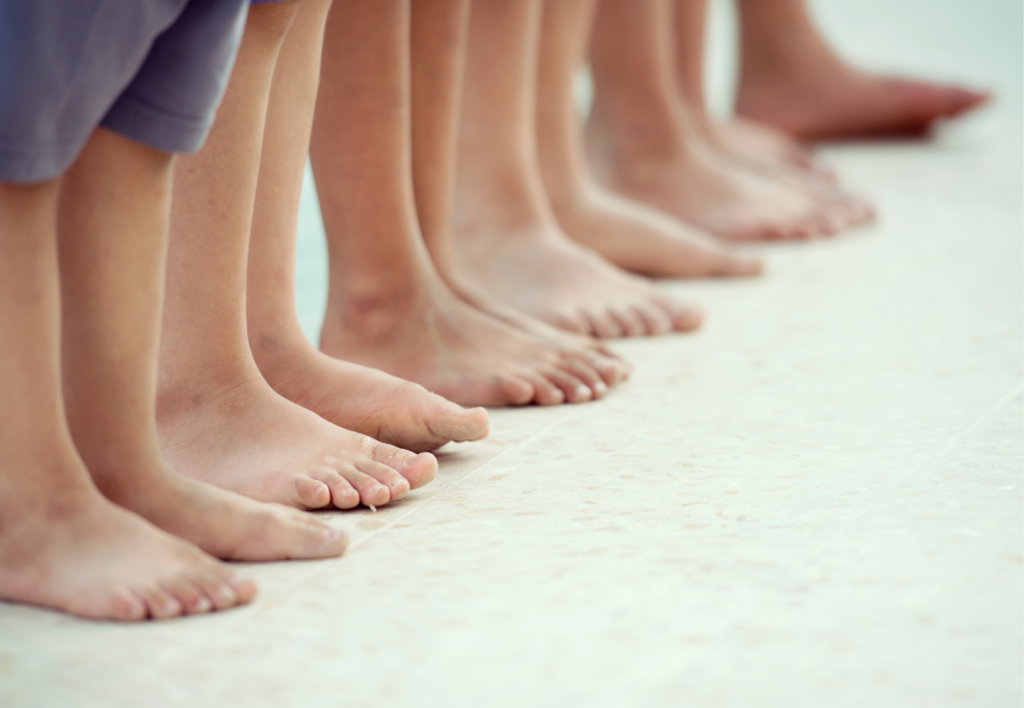
Alignment and Pain Relief
Toe spacers for children can aid in the realignment of their toes, often preventing the development of bunions—a common foot deformity. By promoting proper toe alignment, spacers can offer pain relief from conditions like plantar fasciitis, corns, and calluses that children might otherwise experience due to tight footwear pressing their toes together.
Using these spacers may also help alleviate discomfort in the foot’s arch, where pain from misalignment often manifests. These simple devices work to separate the toes gently, thus encouraging the foot to hold its natural shape rather than conforming to the shape of a shoe.
Prevention and Long-term Foot Health
Introducing toe spacers to children early on can be a proactive step in preventing future foot conditions. Proper toe alignment achieved through their use is essential for overall foot health, and can help in avoiding more serious complications as the child grows.
Regular use of toe spacers can offer a form of preventative care by ensuring that toes do not become cramped or overlapped—a scenario that can lead to chronic pain or mobility issues. Ensuring that children’s feet develop without such hindrances is key to avoiding more severe foot conditions in the future.
In summary, toe spacers have the potential to play a vital role in supporting healthy foot development in children, offering both immediate relief from some common foot-related discomforts and serving as a preventative measure for maintaining foot health over time.
Choosing the Right Toe Spacers
When selecting toe spacers for children, it’s essential to prioritize size and comfort to ensure a pleasant experience.
Size and Comfort Considerations
My experience has taught me that the right size is critical for toe spacers to be effective and comfortable. Children’s feet grow quickly, and so a toe spacer that fits snugly without causing pressure is vital. The following points should be considered:
- Fit: Ensure the toe spacer can comfortably accommodate the width and length of the child’s toes.
- Adjustability: Look for toe spacers with some adjustability to account for growth or swelling.
Table: Toe Spacer Sizing Guide for Children
| Age Group | Approx. Size (US) |
|---|---|
| Toddlers | 3-7 |
| Little Kids | 8-13 |
| Big Kids | 1-6 |
Design Features and Material Quality
The design and material of toe spacers play a significant role in their functionality and the overall comfort they provide.
- Material: Silicone gel is often the best choice for children’s toe spacers due to its flexibility and cushioning effect. It is gentle on their delicate skin and can be easily washed for hygiene.
- Design: Some toe spacers come with features like ridges or bumps that can provide an additional massaging effect. However, the design should be simple to avoid any unnecessary complexity for the child.
Checklist: Key Quality Features
- Hypoallergenic materials
- BPA-free certification
- Soft, dual-layer cushioning
When it comes to toe spacers for children, taking extra care with size, comfort, and material selection is not just a consideration—it’s a necessity. The right toe spacer can contribute positively to a child’s foot development and comfort.
Safe Usage Guidelines
When considering toe spacers for children, it’s essential to prioritize safety to avoid discomfort or injury. The following guidelines will help ensure that toe spacers are used correctly and beneficially.
Consulting a Podiatrist
Before introducing toe spacers to a child’s routine, I recommend consulting with a podiatrist. This medical specialist can assess whether toe spacers are appropriate for your child’s specific foot shape or any existing foot conditions. A podiatrist can also provide personalized advice on the appropriate use of toe spacers, considering the child’s age and activity level.
Proper Fitting and Usage
Proper Fitting:
My experience suggests that ensuring a proper fit is key to the safe use of toe spacers. They should not cause pain or discomfort. Here’s how to check the fit:
- Size: Select toe spacers that match the child’s foot size, neither too tight nor too loose.
- Material: Opt for soft, flexible materials that can adjust to the child’s toe movements.
Usage Guidelines:
Correct usage is as crucial as fitting:
- Duration: Start with short periods of wear, gradually increasing as the child’s feet adapt.
- Activities: Children can use toe spacers while resting, during certain activities, or under socks. It’s best to consult with a podiatrist for activity-specific advice.
Footwear: After using toe spacers, ensure that the child wears properly-sized footwear that does not negate the benefits of using the toe spacers. Avoid tight or constrictive shoes.
It’s crucial to monitor the child’s feet for any signs of redness, pain, or injury. Always discontinue use and seek medical advice if any issues arise.
Additional Considerations for Selection
When choosing toe spacers for children, it’s crucial to select the right type based on specific foot needs and how it fits into a budget and lifestyle.
Special Foot Needs and Conditions
Children with certain foot conditions may require specialized toe spacers. For example:
- Bunions and Overlapping Toes: Gel toe separators can be gentle for a child’s soft skin and may provide relief from pressure.
- Balance Issues: Spacers designed for balance improvement could help in promoting better alignment and stability.
Diabetes: Children with diabetes need toe spacers that minimize friction, as their skin is more vulnerable to injuries.
Consider a consultation with a healthcare provider before any intervention, like using splints or considering surgery, for serious foot deformities.
Cost and Accessibility
The cost and availability of toe spacers can vary:
- Price Range:
- Generic foam separators: $
- High-quality gel toe separators: $$
- Correct Toes or similar brands: $$$
Accessibility is equally important. Locally available toe spacers can save on shipping time and costs, while online options may offer a wider variety.
Keep in mind that while some toe spacers are reusable and washable, others need to be replaced regularly, adding to the long-term cost. Always balance the price against your child’s specific foot care needs.
Quick Overview of Toe Spacers
Toe spacers are vital tools for foot health, especially for children whose feet are still developing. They offer a non-invasive way to encourage proper toe alignment, which is crucial for balancing and walking.
Toe Spacers and Foot Health
Toe spacers are designed to separate the toes gently, promoting better alignment and reducing the risk of foot deformities. Proper toe alignment is essential for a child’s foot health as it:
- Aids in balance by providing a more stable base.
- Improves circulation, which is vital for growing feet.
- Minimizes risk of conditions like bunions, which can develop from crowded toes.
Silicone and gel materials, commonly used in toe spacers, are usually soft and comfortable, making them suitable for children’s delicate skin. Medical-grade gel is often recommended because it’s hypoallergenic and easier to clean, which is important for maintaining hygiene.
Types of Toe Spacers and Materials
Toe spacers come in a variety of types and materials, which can include:
- Silicone: Durable and soft, providing a comfortable fit.
- Gel: Often infused with mineral oil to hydrate the skin while aligning the toes.
- Medical-grade material: Ensures the toe spacers are free from harmful chemicals and are safe for sensitive skin.
Soft materials are crucial for comfort, particularly for children. Here’s a simple breakdown:
| Material Type | Benefits | Recommended For |
|---|---|---|
| Silicone | Easy to clean, comfortable, durable | Daily use |
| Gel | Cushioning effect, hydrating properties | Those with sensitive skin |
| Medical-grade Gel | Hypoallergenic, high-quality | Long hours of use or overnight |
Choosing the right type of toe spacer can make a significant difference to a child’s overall foot health. Parents should select soft materials to ensure comfort and consider medical-grade options for children with allergies or very sensitive skin.

